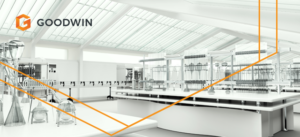
The life sciences industry affects a substantial portion of the U.S. and European economies, in terms of both GDP and the number of individuals employed. And in the context of a global pandemic, the life sciences sector obviously plays an existential societal role. Accordingly, ensuring the safe and continuous functioning of life sciences companies is not only paramount for the industry itself, but for society as a whole. This post considers how laboratories and life sciences manufacturing facilities are adapting to the “new normal” in an effort to abide by governmental guidance and adopt operational best practices.
Laboratories
Unlike many other skilled industries, “work from home” is not a precautionary avenue available to laboratories to mitigate the risk of COVID-19. Given the need for on-site collaboration and nature of the work being performed, remote or virtual work is nearly impossible in the laboratory environment. Adding to the difficulty is that the highly-technical structure of laboratories can make space reconfiguration—for purposes of accommodating social distancing guidelines—challenging and expensive. And when one considers the high incidence of multiple-use items such as testing machines and apparatuses (not all of which can be easily washed down after each use), further health and safety obstacles emerge.
Despite some challenging realities that affect laboratories, the setting does possess certain intrinsic characteristics that provide advantages in a COVID-19 world. Widespread use of personal protective equipment (PPE), fastidious efforts to prevent contamination, use of fresh air, and systematic sanitization are fundamental aspects of the laboratory modus operandi and serve as effective tools to minimize the transmission of COVID-19.
In addition, some life sciences companies have redeployed the innovation endemic to the industry to create or utilize proptech-type preventative devices for their laboratories. For example, one Boston-based life sciences laboratory generated an app that maps out scheduling data to show the physical presence of employees in the laboratory, thus aiding social distancing efforts. Other laboratory operators are considering enhance safety measures such as thermometer screenings, contactless entry, and the establishment of designated spaces for various forms of decontamination and disinfection.
Life Sciences Manufacturing Facilities
Considering the production processes involved, like laboratories, a fully remote workforce is unrealistic for biomanufacturing and other life sciences manufacturing facilities. Consequently, such facilities need to address the risk of COVID-19 through on-site measures. Personal protective equipment, social distancing policies, and facility sanitization are essential. Moreover, as advances in artificial intelligence and robotics enable life sciences manufacturing facilities to further automate their production processes, companies should consider whether the inclusion of these technologies can eliminate workplace situations that lend themselves to the spread of COVID-19.
Looking Ahead
Given the likelihood of the continued presence of COVID-19, aging populations and myriad other factors, the life sciences sectors will continue to play a crucial role in the economies and societies of the U.S. and Europe. Accordingly, identifying and incorporating operational best practices that adapt to the “new normal” will be an ongoing, evolving and collaborative endeavor for companies and organizations in the life sciences realm.
Goodwin’s PropSci practice is an extensive, global network of nearly 300 life sciences and real estate lawyers facing the market. Whether advising companies on pre-Series A financing through exits via IPOs and acquisitions, construction and financing of life sciences facilities, or leasing transactions, our PropSci practice works seamlessly to advise companies and investors across all stages and multiple business needs.
For a longer discussion of return to work issues affecting both the life sciences and healthcare industries, please see our recent article or reach out to PropSci@goodwinlaw.com with any questions.
 The Goodwin Propsci team has partnered with several well-known companies for a short video series that explores what’s happening in the real estate life sciences industry.
The Goodwin Propsci team has partnered with several well-known companies for a short video series that explores what’s happening in the real estate life sciences industry. The Goodwin
The Goodwin  The Goodwin
The Goodwin  The Goodwin
The Goodwin 
